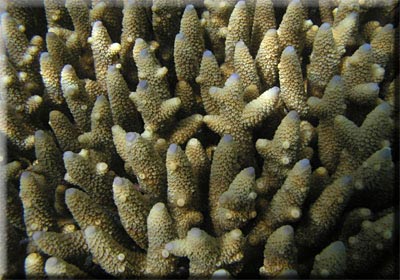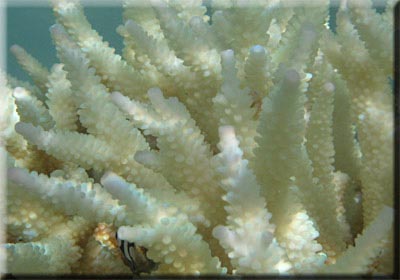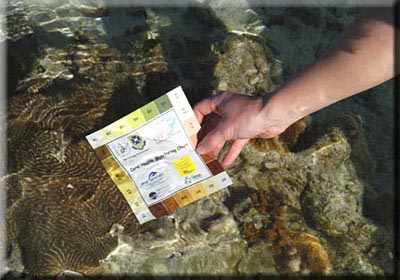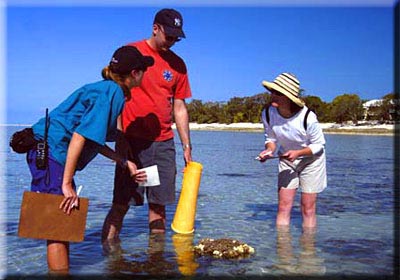Can tourism save the Great Barrier Reef?
This year coral bleaching has once again returned to the Great Barrier Reef and scientists are concerned that this is the warning that signals the demise of our glorious natural wonder.
Coral bleaching is already responsible for killing more than 16% of the world’s coral reefs. Marine biologists believe if these bleaching events continue, then within three decades the undersea gardens of the Great Barrier Reef and the rest of the world will be destroyed.
To begin the fight to save the coral world-wide scientists need to get a clear understanding of the exact reasons why bleaching occurs. The Great Barrier Reef is more than 2000kms in length and there are tens of thousand of square kilometres of reef on the planet. To gather knowledge essential in this struggle over such a vast area, the scientist are now looking for assistance from the people who will be the most affected by the loss of these beautiful marine structures - the tourists.
Associate Prof Justin Marshall from the University of Queensland’s Heron Island Research Station is convinced that, “Coral Bleaching is linked to global warming”. As sea temperatures rise around the world these severe coral bleaching events occur in many reef systems. 
On Heron Island scientists have recorded an increased frequency in bleaching events, with major occurrences in 1998, 2002 and minor events as recently as Julythis year. At the same time they have been monitoring the effect of global warming on the ocean temperatures and believe the two are inextricably linked.
Heron Island lies on the Tropic of Capricorn and is one of the first tropical coral cays at the southern end of the majestic Great Barrier Reef chain. Located 72 kms North East of Gladstone on Queensland’s central coast, it has a historic and unique reputation for both its leisure activities and scientific research.
Associate Professor Justin Marshall with his research team of two, including research assistant Kylie Jennings and Dr. Uli Siebeck (pictured left to right ), and in close association with world coral expert and Director of Heron Island Research Station, Prof Ove Hoegh-Guldberg, has recently made a major break though in being able to measure the colour of coral and its direct relation to coral health.
Prof Marshall and his team have discovered that while coral health can be calculated by measuring the number of living organisms within, it can be more simply measured by checking the coral’s colour.
Coral in our imagination is all the hues of the rainbow. In fact when you strap on the flippers and ’get wet’ with the researchers, you realise that our memory holds onto only the most striking colours and shapes of the reef. The vast amount of corals are in fact more conservative. The large outcrops of plate coral and the magnificent bommies rising metres off the sea floor, along with rest of the marine super-structure are deep greens, rich browns or dark yellows. These are the base tones that underscore a grand symphony layered with the more spectacular coral colors and iridescent marine life.
The hard skeleton of coral is built by a community of animals related to jellyfish, coral polyps. The secret to their huge success in the world’s warm oceans, comes from their special lodgers, small plants or algae, that each polyp houses within its own body tissue. While these plants provide food for the coral, almost like a self-contained farm or garden, the coral polyp protects the garden from hungry mouths outside. Coral colours that we see come largely from the number of algae contained within the body of the polyp.
In 1998, 2002 and again this year various parts of Heron Island’s reefs went white. This loss of colour results from a breakdown in the relationship between coral and plant and, for reasons only just becoming understood, the algal lodgers were evicted. While this probably happens as a natural course of events every now and then (tenants do become troublesome, move on or die) what the scientists are now noticing are more frequent and more wide spread bleaching events. Each of these happens when sea temperature stays unusually hot for too long and this is the result of global warming. (Pictured left is the most recent bleaching event on Heron
What happens after a bleach? The tenants are not rejected forever, gardens are re-grown and new algae taken in, but loss of nutrition for the coral polyps takes its toll. 1998 saw 16% of the world’s reefs dead after a bleach. Some coral recovered, much however was in such an exhausted state that their annual breeding cycle was disrupted. The effect of the 2002 bleach is still being assessed and understanding the effect of such a widespread phenomenon is difficult. Monitoring bleach and recovery of coral on even a small reef is a huge time-consuming task. What is needed is a quick, but also scientifically sound method of assessment.
The research team had already proved that they could determine the number of algal lodgers in coral, based on the varying shades of colour. For example, rich colours indicate millions of tiny of algae present, as the corals’ colours slide toward the lighter shades there are fewer nutrition providers, ending in white which may lead to starvation.
A scale of these shades was assembled from the darkest through to white. Each shade represented the number of organisms alive in the coral and was given an individual code. When these shades were reproduced on a printed chart, they immediately resembled something very familiar.
Home renovators would recognise it as a paint colour chart from the local hardware store. The scientists knew the familiarity and simplicity of the chart could be the key to the massive data collection task ahead of them. The charts were printed on waterproof plastic, with each edge containing the range of shades for the main coral colours.Taking these charts out on the reef, the scientists only had to match the shadings from the chart with the coral being inspected, and immediately they had a measure of algal numbers and coral health.
A team of just four scientists however, can cover only a small patch of the reef and to make this coral health system work, hundreds of readings from a variety of sites must be gathered over time. These findings, added to a database then give an overall measure of the stresses that coral at Heron (or elsewhere) are under. Similarly the data matched to sea temperature fluctuations, and other stresses, scientifically validates the cause of bleaching on reef systems worldwide.
The question was; How to gather thousands more people to go out to the reefs every day to snorkel, dive and walk around making colour matches and recording codes?
At the research station on Heron Island, swarms of tourists take guided tours to see what work is being carried out to preserve their beloved coral cay and everyday the visitors ask the same question of the researchers, “What can I do to help protect the reef?”.
The answer to that question is now a Coral Health Chart (pictured left). Tourists set off on their scheduled reef walks or diving trips more than sight-seers, but as a willing army of data recorders. Some of the tourists make only a few recordings, others fill the data sheet and ask for another. All the codes they record are either entered into the database on the web site www.coralwatch.org by the tourists or delivered to the research team who plug them into the computer database themselves, constantly enriching the quality of information they now have on coral health
In May this year a test program was set up by the University of Queensland research team led by Prof Marshall and P&O Resorts. Visitors to Heron Island are now offered the charts to take with them on their daily activities as well as a specialised Coral Health Reef Walk.
Michael Sheridon, Heron Island General Manager says, “This is a good new idea for the resorts guests. They are always looking for something new since their last visit. We have always had an excellent working relationship with the University of Queensland research station and I think we need to see how these charts and the guided walks are taken up be the visitors.”
All the activities officers on Heron are qualified marine biologists. They’re enthusiasm in guiding the Coral Health Reef Walks is paramount to the success of this trial. Belinda Mann, one of P&O Resorts’ activities officers decided to take up leading the Coral Health Reef Walk because the first question from more than 90% of her guests is about coral bleaching.
Belinda now takes more than 20 tourists a week on Coral Health Reef Walks.
“Many of our guests want to do something more than just look at the coral and other animals. This coral health walk gives them the chance to not only participate in real research, but many guests feel they have contributed to saving the environment. Rather than just hearing about the problems of bleaching and the other threats this is something active”, Belinda believes.
Talking with some of the guests as they prepared to set out with their charts in hand, Julia and Andrew Millen from Sydney say they are glad to taking part,
“Being involved in the coral monitoring at Heron Island gives us a great sense of doing something for the coral reefs and we're happy to do this as a holiday activity” says Julia.

Prof Marshall knows that measuring the health of the coral is not going to immediately stop coral bleaching. The facts indicate that to have a real chance of saving the world’s reefs, countries around the world must decide to do something about humankind’s acceleration of global warming.
Prof Marshall carefully explains, “It’s only when we change our consumption patterns that we can really contribute to saving the world’s reefs from bleaching. And I think that these Coral Health Charts can assist in raising awareness and working toward those outcomes”.
“The program of using charts we hope will become just another one of the enjoyable past-times that people do when they visit a reef system. The data that is collected will certainly help us monitor the health of coral and may even provide an early warning system if a bleaching event was on the way".
“But just as importantly it may assist in letting people know that individual contributions to saving the environment can make a global difference. Having seen the mind-boggling beauty of the reef and be faced with the loss of such splendour, tourists helping out and then going home to think over their holiday may even begin to change the way they do many other things in their lives.”
The research team are now looking at expanding their coral health program to many other islands throughout the Great Barrier Reef and have recently been funded by Australia’s Cooperative Research Centre for Sustainable Tourism to take their valuable and coral health to international destinations.
To contact the research team about the coral health monitoring project visit www.coralwatch.org or email Kylie Jennings on K.Jennings@uq.edu.au, phone +61 (07) 3365 4063.
Author: Mr Brad Cox, Communications Manager, Co-operative Research Council for Sustainable Tourism, Queensland, Australia
Photographs by Brad Cox & Justin Marshall